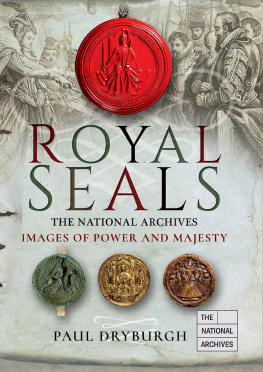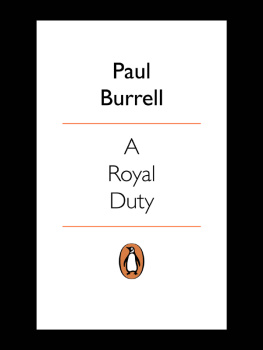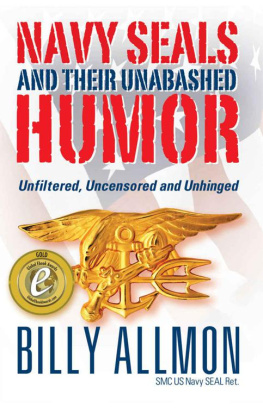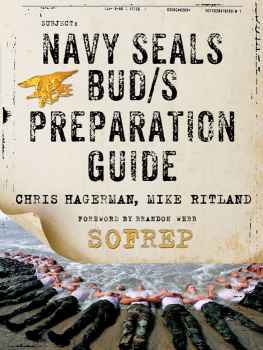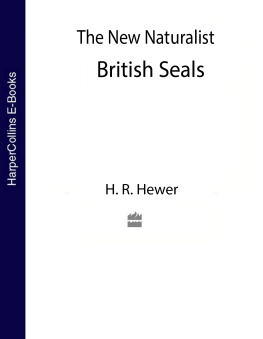Paul Dryburgh - Royal Seals
Here you can read online Paul Dryburgh - Royal Seals full text of the book (entire story) in english for free. Download pdf and epub, get meaning, cover and reviews about this ebook. year: 2020, publisher: Pen and Sword History, genre: Children. Description of the work, (preface) as well as reviews are available. Best literature library LitArk.com created for fans of good reading and offers a wide selection of genres:
Romance novel
Science fiction
Adventure
Detective
Science
History
Home and family
Prose
Art
Politics
Computer
Non-fiction
Religion
Business
Children
Humor
Choose a favorite category and find really read worthwhile books. Enjoy immersion in the world of imagination, feel the emotions of the characters or learn something new for yourself, make an fascinating discovery.
- Book:Royal Seals
- Author:
- Publisher:Pen and Sword History
- Genre:
- Year:2020
- Rating:3 / 5
- Favourites:Add to favourites
- Your mark:
- 60
- 1
- 2
- 3
- 4
- 5
Royal Seals: summary, description and annotation
We offer to read an annotation, description, summary or preface (depends on what the author of the book "Royal Seals" wrote himself). If you haven't found the necessary information about the book — write in the comments, we will try to find it.
Royal Seals — read online for free the complete book (whole text) full work
Below is the text of the book, divided by pages. System saving the place of the last page read, allows you to conveniently read the book "Royal Seals" online for free, without having to search again every time where you left off. Put a bookmark, and you can go to the page where you finished reading at any time.
Font size:
Interval:
Bookmark:

THE NATIONAL ARCHIVES: IMAGES OF POWER AND MAJESTY
ROYAL SEALS
THE NATIONAL ARCHIVES: IMAGES OF POWER AND MAJESTY
PAUL DRYBURGH

First published in Great Britain in 2020 by
Pen and Sword History
An imprint of
Pen & Sword Books Ltd
Yorkshire - Philadelphia
Copyright Paul Dryburgh, 2020
ISBN 978 1 52672 953 8
eISBN 978 1 52672 954 5
Mobi ISBN 978 1 52672 955 2
The right of Paul Dryburgh to be identified as author of this work has been asserted by him in accordance with the Copyright, Designs and Patents Act 1988.
A CIP catalogue record for this book is available from the British Library.
The National Archives logo device is a trade mark of The National Archives and is used under licence. The National Archives logo Crown Copyright 2018 Crown Copyright images reproduced by permission of The National Archives, London England, 2018. The National Archives is the official archives and publisher for the UK Government, and for England and Wales. We work to bring together and secure the future of the public record, both digital and physical, for future generations. The National Archives is open to all, offering a range of activities and spaces to enjoy, as well as our reading rooms for research. Many of our most popular records are also available online.
Images of the seals prefixed with The National Archives reference DL are the property of Her Majesty the Queen in Right of Her Duchy of Lancaster and have been reproduced by kind permission of the Chancellor and Council of Her Majestys Duchy of Lancaster.
All rights reserved. No part of this book may be reproduced or transmitted in any form or by any means, electronic or mechanical including photocopying, recording or by any information storage and retrieval system, without permission from the Publisher in writing.
SJmagic DESIGN SERVICES, India.
Pen & Sword Books Ltd incorporates the Imprints of Pen & Sword Books Archaeology, Atlas, Aviation, Battleground, Discovery, Family History, History, Maritime, Military, Naval, Politics, Railways, Select, Transport, True Crime, Fiction, Frontline Books, Leo Cooper, Praetorian Press, Seaforth Publishing, Wharncliffe and White Owl.
For a complete list of Pen & Sword titles please contact
PEN & SWORD BOOKS LIMITED
47 Church Street, Barnsley, South Yorkshire, S70 2AS, England
E-mail:
Website: www.pen-and-sword.co.uk
or
PEN AND SWORD BOOKS
1950 Lawrence Rd, Havertown, PA 19083, USA
E-mail:
Website: www.penandswordbooks.com
It will be obvious to anyone who reads this book and knows the history of the collection of seals at The National Archives that my principal debt is to Dr Adrian Ailes. Adrian retired in 2016 from his role as Principal Records Specialist (Early Modern Records). In the two years between my appointment in 2014 and his departure, Adrian nurtured my interest in seals (which I will freely admit was not particularly strong) and guided me to a growing appreciation. I cannot do justice in this book to his expertise or to the loss researchers at TNA will feel at my taking over the seals brief from Adrian. However, I hope even a tiny fraction of his knowledge and enthusiasm is evident here.
Other colleagues past and present have helped immensely in bringing this book to fruition. Chief among them is conservation scientist Dr Elke Cwiertnia, with whom Adrian and I worked on the Wax Seals in Context project at TNA in 2014-16. Elkes knowledge and willingness to experiment brought new findings on the chemical and physical composition of seals, some of which is reflected here. The illustrations in are hers and are reproduced here by permission of the Collection Care Department at TNA. Amy Sampson, Preventive Conservator in the same department, has given me many opportunities to broaden my knowledge by involving me with her project to digitise our collection of seals moulds. The expertise and friendship of colleagues within the Medieval, Early Modern, Legal and Maps and Plans team has also provided a tremendous boon; rarely will one meet a more knowledgeable, engaged and engaging group of specialists in their field.
Ela Kaczmarska, Publishing Executive at TNA, has smoothed all of the internal processes involved in seeing this book to production, while both Alice Wright and Aileen Pringle of Pen & Sword have patiently, very patiently, steered me towards publication.
My debt is to you all.
Paul Dryburgh,
October 2020
On most days perhaps even several times a day many of us will need to display and prove we are who we say we are in order to live our ordinary lives. More and more across the world, we identify ourselves and so validate and give force to our wishes in a virtual world where digital tools and methods are transforming the personal relationships and interactions which for centuries have governed our existence. The encoding and encryption of personal data in, for instance, chip and pin and Quick Response (QR) technology allows us to shop, bank and travel with greater freedom, while smart phones can now operate with fingerprint and facial recognition software to keep us in touch with loved ones, friends and the latest news instantly, and (hopefully) prevent others accessing our information. Email signatures and online password-protected accounts enable (in theory at least) secure communication, and business and legal transactions from the comfort of our workspace or armchair, and permit companies and government agencies to carry out their functions efficiently and effectively. However, the principle by which individuality and identity is embodied in something impersonal is not a modern invention. For many centuries, in a society where the written word is king in communication, we have employed two major means of proving our identity and showing our agreement to financial and legal acts, such as the acknowledgement and payment of debts and transfer of land or property. The signature almost as individual as any fingerprint has long conveyed our identity and assent literally writ large, but has done so only since about the fifteenth century; throughout the Middle Ages, even prior to the Norman Conquest, though to a decreasing extent from the eighteenth century, the primary medium through which individuals, communities and institutions authenticated and validated their identity and intentions was the seal.
Seals tell us so much about the status of their owner, give historical information around their imagery, and can help to date the document to which they are attached. Through this combination of text, image and material form, seals encrypt aspects of identity in a written record and those which an individual or group wish to reflect about themselves to the outside world. They are miniature marvels of their age and are fascinating glimpses into other worlds of art, thought, humour, trade, labour, majesty and power.
The seal is simple but effective technology. The term can mean either a matrix (or die) cast from a hard substance, usually but not exclusively metal, into which an image or personal mark has been engraved, or, customarily, the impression, that same personal mark made by the matrix into a soft material like wax, shellac or clay. Both conveyed personal or corporate symbolism that helped identify the owner and displayed their status and office and, perhaps, something of their wit and personality. Matrices could come in many shapes and sizes, from a signet ring into which a Roman intaglio gemstone might be secured, to something that looks like a chess piece with a handle at the top (often to be placed on a chain and hung around the owners neck) and the image engraved in the base, to a press. Some presses, like that at Canterbury Cathedral, are enormous screw mechanisms, others, like those for the medieval English royal great seals, are made up of two plates between which cakes of wax are sandwiched and then pressed together using lugs and lugholes.
Font size:
Interval:
Bookmark:
Similar books «Royal Seals»
Look at similar books to Royal Seals. We have selected literature similar in name and meaning in the hope of providing readers with more options to find new, interesting, not yet read works.
Discussion, reviews of the book Royal Seals and just readers' own opinions. Leave your comments, write what you think about the work, its meaning or the main characters. Specify what exactly you liked and what you didn't like, and why you think so.

